Achoo! Counting the Culprits
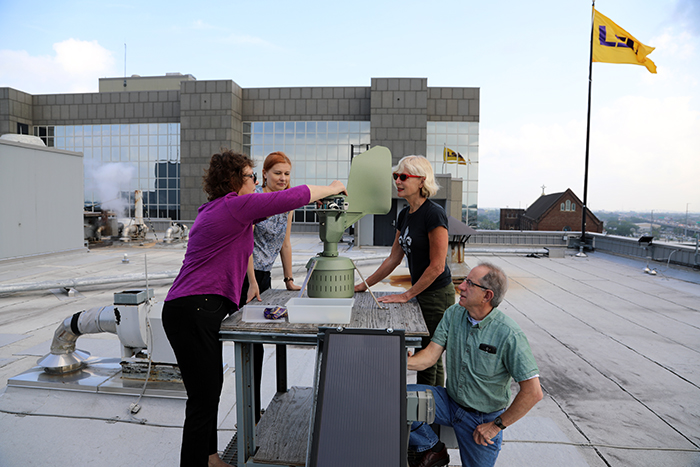
The signs of the season, the Spring Allergy Season that is, have been painting the town yellow for weeks. Pollen, pollen and more pollen have been coating everything from cars to shoes. There are tree pollen, weed pollen, grass pollen and as many different types of them as there are blooming plants and trees, which in our climate is a lot. Trees, grasses and low-growing weeds produce small, light, dry pollen grains that can easily be spread by wind currents, which keep them airborne and can carry them over long distances. These are the pollen that trigger allergy symptoms.
If you suffer from allergies, and metropolitan New Orleans is in the top tier of cities where people are most affected by seasonal allergy symptoms, LSU Health New Orleans thinks it is important that you know what is actually in the air you breathe. If you know what pollen are out there, you can better prepare. So, every day the pollen counters at LSU Health New Orleans Pollen Counting Station, housed in the School of Medicine’s Section of Pulmonary/Critical Care & Allergy/Immunology, report what pollen and in what concentrations are present here.
Leslie Capo
Office: 504-568-4806
Cell: 504-452-9166
lcapo@lsuhsc.edu
Related
Tis the Season: Pollen Allergies Grand Rounds
LSU pollen tests yield accurate, day-to-day results for database
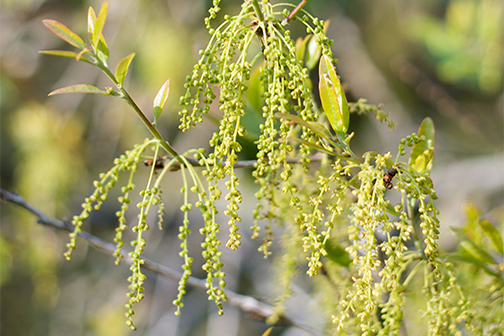
“After 24 hours, the slide has gone 48 mm, so the pollen grains are distributed, covering practically the whole slide,” notes Research Associate Elizabeth Porretta, team leader.
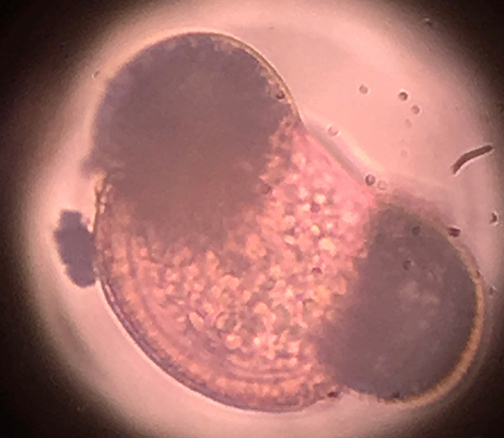
At their fingertips is also a binder filled with pictures and other identifying information. They have reference slides as well. The LSU Health team of counters is even building their own reference library of pollen specific to our area like bald cypress, sweet gum, magnolia and palm.
A scale determines the level of outdoor exposure – very high, high, moderate or low.
The daily counts are a real help to the physicians who are treating patients, in ever-increasing numbers.
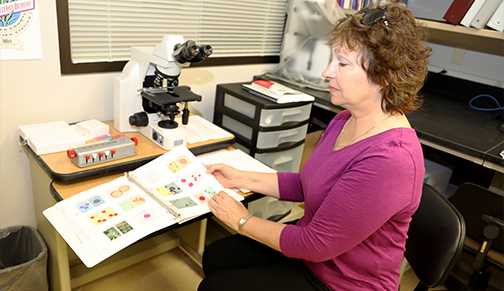
There is an important distinction that sets the LSU Health New Orleans counts apart.
“Having a local day-to-day pollen count based on real data is really great because it’s an accurate assessment rather than an estimated predictor,” says Dr. Michelle Korah-Sedgwick, LSU Health New Orleans Assistant Professor of Clinical Medicine. “This year, we had a really mild winter, so we actually saw pollen earlier than we would have other years.”
There’s another benefit to a real pollen count – quicker diagnoses. “Knowing what’s in or not in the air and if that doesn’t correlate with symptoms, this could indicate that a patient’s condition is something other than allergies,” adds Korah-Sedgwick, also a board-certified allergist/immunologist.
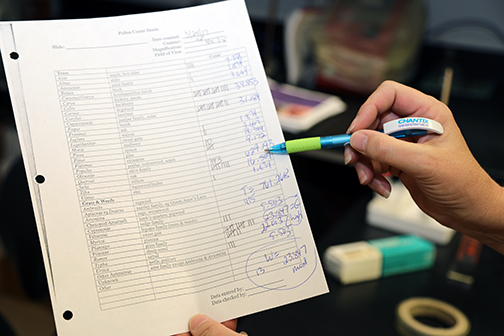
In addition to sending the levels to the National Allergy Bureau, local television stations, WWL-TV, WVUE-TV - Fox 8, WGNO-TV and WDSU-TV, report them in their daily weathercasts. The Weather Channel also uses LSU Health New Orleans’ counts.
